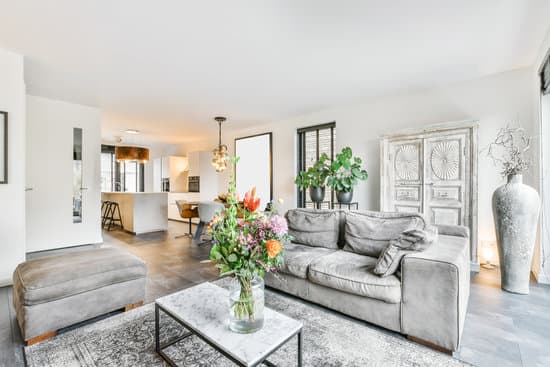How did Romans decorate their homes? The ancient Romans were known for their exquisite taste in art and architecture, which extended to their living spaces. In this article, we will delve into the world of Roman home decor, exploring the historical context, architectural layout, furnishings, wall decorations, lighting, gardens and atriums that made up the ancient Roman home. From mosaics and frescoes to lamps and gardens, we will discover how the Romans infused beauty and elegance into their living spaces.
The influence of Roman culture can still be seen today in many aspects of modern life. From government systems to language to art, the Romans have left an indelible mark on Western civilization. Their approach to decorating homes was no different. By understanding how the ancient Romans decorated their living spaces, we gain valuable insight into a rich cultural heritage that continues to inspire contemporary design trends.
Join us as we take a journey back in time to explore the opulent and sophisticated world of ancient Roman home decor. From the layout and design of homes to the adornment of walls with stunning mosaics and frescoes, we will uncover the secrets behind creating a luxurious Roman living space that has stood the test of time.
Historical Context
The historical context of Roman influence and decorating trends played a significant role in shaping the way Romans decorated their homes. The Romans were heavily influenced by Greek culture, and this was reflected in their home decor. They also incorporated elements from other cultures they encountered through conquest and trade, creating a unique blend of styles that became characteristic of Roman interior design.
One of the key factors that influenced Roman decorating trends was the social hierarchy. Wealthy Romans often decorated their homes with luxurious materials such as marble, gold, and precious stones, while the less affluent used less expensive materials to achieve a similar aesthetic. This class-based approach to home decor resulted in distinct styles for different socioeconomic groups within Roman society.
The Romans were also known for their love of opulence and grandeur, which is evident in the way they adorned their homes. Elaborate wall decorations, intricate mosaics, and colorful frescoes were common features in Roman households. Additionally, they often displayed tapestries with intricate patterns and designs to add an air of sophistication to their living spaces.
| Aspect | Description |
|---|---|
| Influence | Roman decorating trends were heavily influenced by Greek culture and other cultures encountered through conquest and trade. |
| Social Hierarchy | The social hierarchy played a significant role in shaping Roman home decor, with distinct styles for different socioeconomic groups within Roman society. |
| Opulence | The Romans loved opulence and grandeur, which is reflected in the elaborate wall decorations, intricate mosaics, frescoes, and colorful tapestries found in their homes. |
Architecture
The architecture of Roman homes was not only functional but also intricate and beautiful. The layout and design of these homes played a significant role in how Romans decorated their living spaces, creating a seamless blend of aesthetics and practicality.
The Atrium
One of the most distinct features of a Roman home was the atrium, which served as the central hub of the household. This open space at the heart of the home was often adorned with elaborate mosaics or marble flooring. In some cases, it also featured a pool or fountain as a centerpiece, surrounded by columns and statues.
The Peristyle
Connected to the atrium was the peristyle, an open courtyard typically adorned with lush greenery and sometimes even small shrines or decorative statues. This outdoor space provided natural light and ventilation to the surrounding rooms while also serving as an area for relaxation and social gatherings.
The Layout
Roman homes were designed with functionality in mind, with separate wings or sections for specific purposes such as dining, bathing, and sleeping. The interior layout often revolved around the central atrium and peristyle, creating a sense of harmony between indoor and outdoor spaces.
The intricate architecture of Roman homes laid the foundation for their decorative style, influencing everything from wall decorations to furnishings. Understanding this layout and design is crucial to grasp how Romans decorated their homes with both elegance and practicality.
Furnishings
When it comes to furnishing their homes, the ancient Romans had a keen eye for both comfort and elegance. The furnishings in a Roman home were not only functional but also served as a display of wealth and status. From luxurious couches to intricate tables, Roman home decor was a reflection of the refinement and opulence of the time.
Couches: A Symbol of Status
One of the most prominent pieces of furniture in a Roman home was the couch, known as a “kline.” These couches were typically made of wood or metal and were adorned with lavish textiles such as silk and embroidered fabric. The number of cushions on a kline was an indicator of the owner’s social standing, with more cushions representing higher status.
Tables: Functionality With Flair
Roman tables were not just practical surfaces for dining and socializing but also works of art in their own right. Made from materials such as marble, stone, or wood, these tables were often intricately carved and decorated with inlaid patterns. Some tables even featured rotating tops that could be raised or lowered for versatility.
Decorative Accents: Bringing Style to Every Corner
In addition to couches and tables, Roman homes were filled with decorative accents such as ornate chests, statues, and vases. These embellishments added an extra layer of sophistication to the home environment, showcasing the craftsmanship and artistic sensibilities of the Romans. These furnishings also served as conversation starters, allowing guests to appreciate the taste and discernment of the homeowner in curating their living space.
The careful selection and placement of furnishings in Roman homes reflected not only the material wealth of the homeowner but also their appreciation for beauty and design. The combination of luxury, functionality, and artistry in Roman home decor continues to inspire modern interior design trends today.
Wall Decorations
The ancient Romans were known for their exquisite taste in interior design, and one of the most striking elements of their home decor was their wall decorations. Mosaics, frescoes, and tapestries played a significant role in adorning the walls of Roman homes, adding color, grandeur, and a touch of luxury to everyday living spaces.
Mosaics were a popular choice for decorating floors and walls in Roman homes. These intricate designs were created by assembling small pieces of colored glass, tile, or stone to form elaborate patterns and images. The Romans used mosaics to add decorative elements to various rooms in their homes, from simple geometric patterns in entryways to elaborate scenes depicting mythology or daily life in dining areas.
In addition to mosaics, frescoes were another common form of wall decoration in ancient Roman homes. Frescoes were paintings created directly on the surface of wet plaster walls, resulting in vibrant and lasting works of art. Roman frescoes often depicted scenes from nature, mythology, or everyday life, bringing beauty and visual interest to the interior spaces of their homes.
Lastly, tapestries were also used as wall decorations in Roman homes. These woven textile hangings served both practical and aesthetic purposes, providing insulation against cold drafts while also adding color and texture to the walls. Tapestries often featured ornate patterns or scenes similar to those found in mosaics and frescoes.
Overall, through these various forms of wall decorations such as mosaics, frescoes, and tapestries, the Romans showcased their exquisite craftsmanship and artistic skills while adorning their living spaces with beauty and sophistication.
| Wall Decoration Type | Description |
|---|---|
| Mosaics | Created intricate designs using colored glass, tile, or stone |
| Frescoes | Painted directly on wet plaster walls with scenes from nature or mythology |
| Tapestries | Woven textile hangings featuring ornate patterns or scenes |
Lighting
The lighting in ancient Roman homes played a crucial role in creating a cozy and inviting atmosphere. Romans used various types of lamps and candles to light up their living spaces, allowing them to carry out their daily activities even after the sun had set. Here are some examples of the lighting fixtures that Romans used in their homes:
- Oil Lamps: Oil lamps were commonly used in Roman households to provide light. These lamps were typically made of clay or bronze and contained a wick that was immersed in olive oil or another type of fuel. The light produced by these lamps helped create a warm and intimate ambiance, especially during evening gatherings or meals.
- Candles: Romans also used candles made from tallow or beeswax to illuminate their homes. These candles were placed in candle-holders, which were often ornately decorated with intricate designs. The soft glow of the candles added a touch of elegance to the interior spaces of Roman residences.
The use of lamps and candles was not just practical but also served as a form of decoration within Roman homes. The design and placement of these lighting fixtures were carefully considered to enhance the overall aesthetic appeal of the living spaces.
In addition to providing illumination, lamps and candles also held symbolic significance for the Romans. They were often used during religious ceremonies and rituals, further emphasizing their importance in Roman domestic life. Overall, the use of lamps and candles demonstrates how Romans valued both functionality and beauty when it came to decorating their homes.
Gardens and Atriums
In ancient Rome, the concept of bringing the outdoors indoors was a significant aspect of home design and decoration. This can be seen in the presence of gardens and atriums within Roman homes, which served as a way to connect with nature while maintaining a sense of privacy and sanctuary. Here are some key features and characteristics of gardens and atriums in ancient Roman homes:
- Atrium: The atrium was typically the central courtyard of a Roman home, serving as the main entrance and reception area. It featured an open roof to allow natural light to filter in, along with a shallow pool (impluvium) to collect rainwater. Surrounding the atrium were various rooms such as bedrooms, dining areas, and other living spaces.
- Gardens: Beyond the atrium, many Roman homes also had lush gardens filled with colorful flowers, shrubs, and even small fruit trees. These gardens were often designed as tranquil retreats with pathways for strolling, decorative fountains or statues, and seating areas for relaxation or social gatherings.
- Connection to Nature: The presence of gardens and atriums allowed Romans to maintain a connection to nature even within their urban living spaces. The sound of water from fountains or birdsong added to the ambiance, while the scent of blossoming flowers perfumed the air.
The Roman tradition of incorporating gardens and atriums into home design continues to influence modern architecture and interior design. Across the world, homeowners and architects look to ancient Rome for inspiration when creating indoor-outdoor spaces that blend natural beauty with functional living environments. From courtyards enclosed by glass walls to rooftop gardens above bustling city streets, the legacy of bringing the outdoors indoors can be traced back to the timeless elegance of Roman home decor.
Conclusion
The enduring influence of Roman home decor can be seen in various aspects of interior design and architecture even today. From the layout and design of Roman homes to the use of wall decorations, lighting, and even gardens and atriums, Romans had a significant impact on how we decorate our homes.
One of the most distinct features of Roman home decor was their use of wall decorations. Mosaics, frescoes, and tapestries adorned the walls of Roman homes, depicting scenes from daily life, mythology, and nature. These intricate and colorful works of art added a touch of elegance and grandeur to the interiors.
In addition to wall decorations, Romans also utilized lamps and candles for lighting in their homes. The soft glow of these light sources created a warm and inviting atmosphere, adding to the overall ambience of the space.
The practice of bringing the outdoors indoors was another key aspect of Roman home decor. Gardens and atriums were common features in Roman homes, providing a sense of tranquility and natural beauty within the living spaces. This approach to incorporating nature into interior design continues to inspire modern-day decorators looking to create a harmonious balance between indoor and outdoor elements in their homes.
Bonus Section
In conclusion, the ancient Romans had a distinctive and influential approach to decorating their homes that continues to inspire modern interior design. From the layout and design of their architecture to the furnishings, wall decorations, lighting, and incorporation of gardens and atriums, Roman home decor reflected their sophisticated taste and love for beauty.
The enduring influence of Roman home decor can be seen in many aspects of modern interior design. Designers continue to draw inspiration from the Romans’ use of mosaics, frescoes, and tapestries as well as their inventive use of lighting through lamps and candles. The idea of bringing the outdoors indoors with gardens and atriums has also become a popular concept in contemporary home design.
For those interested in incorporating elements of ancient Roman decor into their own homes, there are countless opportunities for modern inspirations. Whether it’s adding a mosaic feature wall, incorporating classical Roman motifs in furnishings, or creating an indoor garden space, the influence of Roman home decor provides a rich source of inspiration for today’s interior designers and homeowners alike.
By studying how did Romans decorate their homes, we can gain insights into timeless design principles that continue to resonate with us today.
Frequently Asked Questions
What Was the Decoration of Roman Houses?
The decoration of Roman houses varied depending on the homeowner’s wealth and social status. Common elements included colorful frescoes, mosaics, marble floors, and decorative items such as sculptures and vases.
How Did Romans Decorate Their Buildings?
Romans decorated their buildings with grand architectural features such as columns, arches, and domes. They also used materials like marble, granite, and limestone for facades and interior ornamentation to showcase their wealth and power.
What Was the Primary Method of Interior Decoration in the Roman Times?
The primary method of interior decoration in Roman times was the use of colorful frescoes painted directly onto the walls. These intricate paintings depicted scenes from mythology, landscapes, or everyday life, adding beauty and sophistication to the living spaces.

I’m thrilled to be your companion on this exciting journey through the world of home decor and design. With a passion for turning houses into homes and a keen eye for the finer details, I’m here to help you transform your living spaces into beautiful, functional, and meaningful havens.





